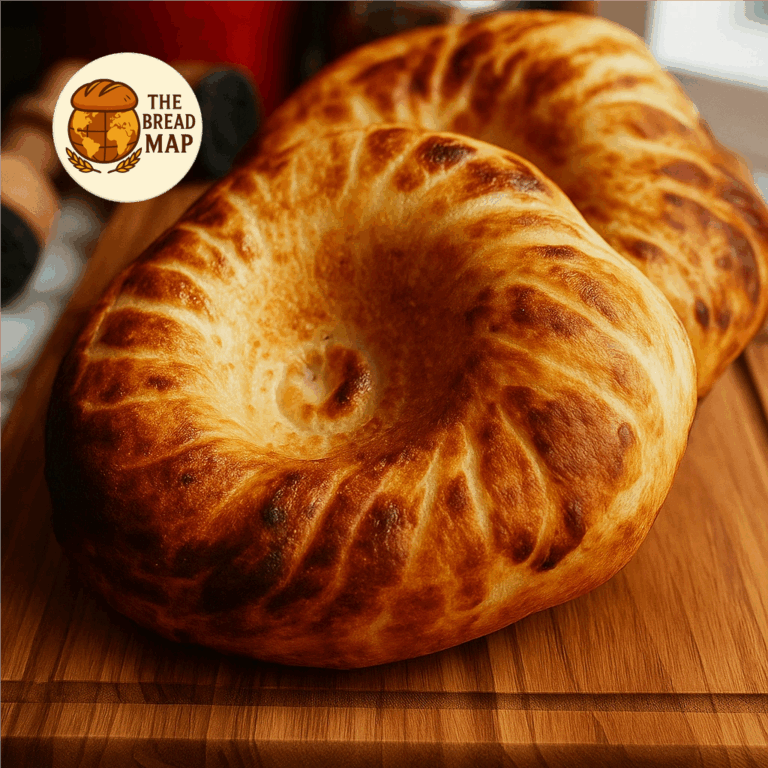
There is a bread in Uzbekistan that commands both reverence and appetite—a round, beautifully stamped creation called Obi Non. Known for its crackling golden crust and irresistibly soft crumb, Obi Non is not just a staple; it’s an edible emblem of Uzbek culture. Wherever you wander in Central Asia, the fragrance of this tandoor-baked bread signals warmth, welcome, and home. Today, join me as we break bread (but never cut!) with Obi Non, the pride of Uzbek breadmaking.
Historical Background
The legacy of Obi Non stretches back thousands of years—long before modern borders carved up Central Asia. Its history is entwined with the Silk Road, where bustling bazaars thrived and cultures mingled. As traders and travelers crossed the vast steppes and deserts, Obi Non became a universal companion: easy to make, resilient against spoilage, and nourishing.
Traditionally, Obi Non’s trademark design—a stamped center—is more than decoration: it prevents the bread from puffing into a dome in the fierce heat of the tandoor oven, ensuring each loaf bakes evenly. This tradition, passed from generation to generation, carries stories, skills, and secrets within every loaf.
Region of Origin
Though Obi Non is now a centerpiece in every Uzbek table, its spiritual home is the ancient city of Samarkand. Here, master bakers or nonvoy produce breads so renowned that people once packed loaves on caravans to distant cities, believing the flavor never faded. Each region of Uzbekistan, from the bustling heart of Tashkent to the mountains of Fergana, stamps its twist on the recipe, but the soul of the bread remains forever tethered to Samarkand.
Ingredients and Preparation
At its heart, Obi Non is humble—proof that simple ingredients, when honored, yield extraordinary results. The traditional dough contains:
- Strong wheat flour
- Water
- Salt
- Yeast (or a natural sourdough starter)
- Sometimes a splash of milk or yogurt for tenderness
After an initial knead and rise, bakers expertly shape the dough into rounds, then use a charmingly ornate stamp called a chekich to emboss the center. The bread is brushed with water or milk, sprinkled with black or white sesame or nigella seeds, and then—here’s where the magic happens—slapped directly onto the searing inner wall of a tandoor oven.
In just minutes, the ringed loaves balloon, their centers remain soft and moist, while the edges crisp to perfection. Pulled from the oven, they cool atop wooden racks—the irresistible scent drawing neighbors from blocks away.
Cultural Importance
To Uzbeks, Obi Non is more than bread; it is a symbol of life itself—a bearer of blessings, gratitude, and hospitality. The respect accorded to it borders on sacred. Among its cultural customs:
- Obi Non must never be laid upside down.
- It is never cut with a knife—always torn by hand, to honor tradition and humility.
- Bread is present at every significant gathering: weddings, funerals, and even in the hands of a returning traveler, symbolizing safe homecoming.
- Sharing Obi Non is an act of friendship—no guest leaves an Uzbek home without being offered a piece.
In essence, Obi Non is the heartbeat of Uzbek hospitality—a bread best enjoyed in good company, savored with plov or fresh yogurt, and always, always shared.
So next time you tear into this beautiful round, remember: you are partaking in an enduring story—one of family, tradition, and the simple joy of breaking bread together.
Leave a Reply